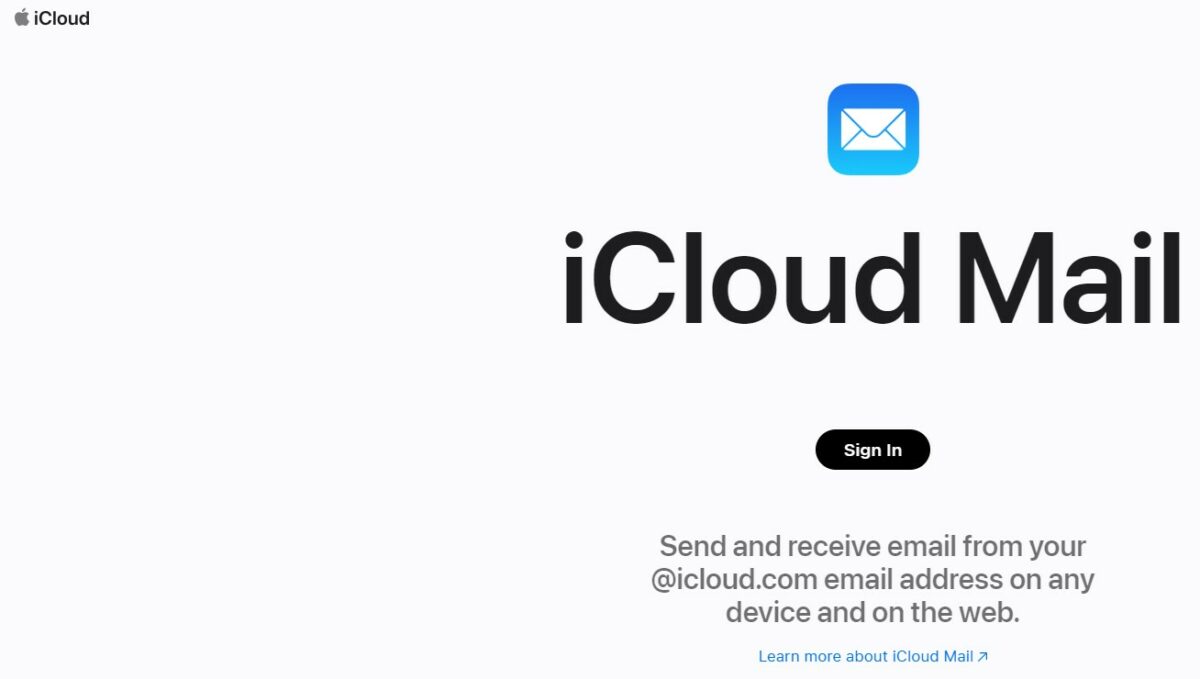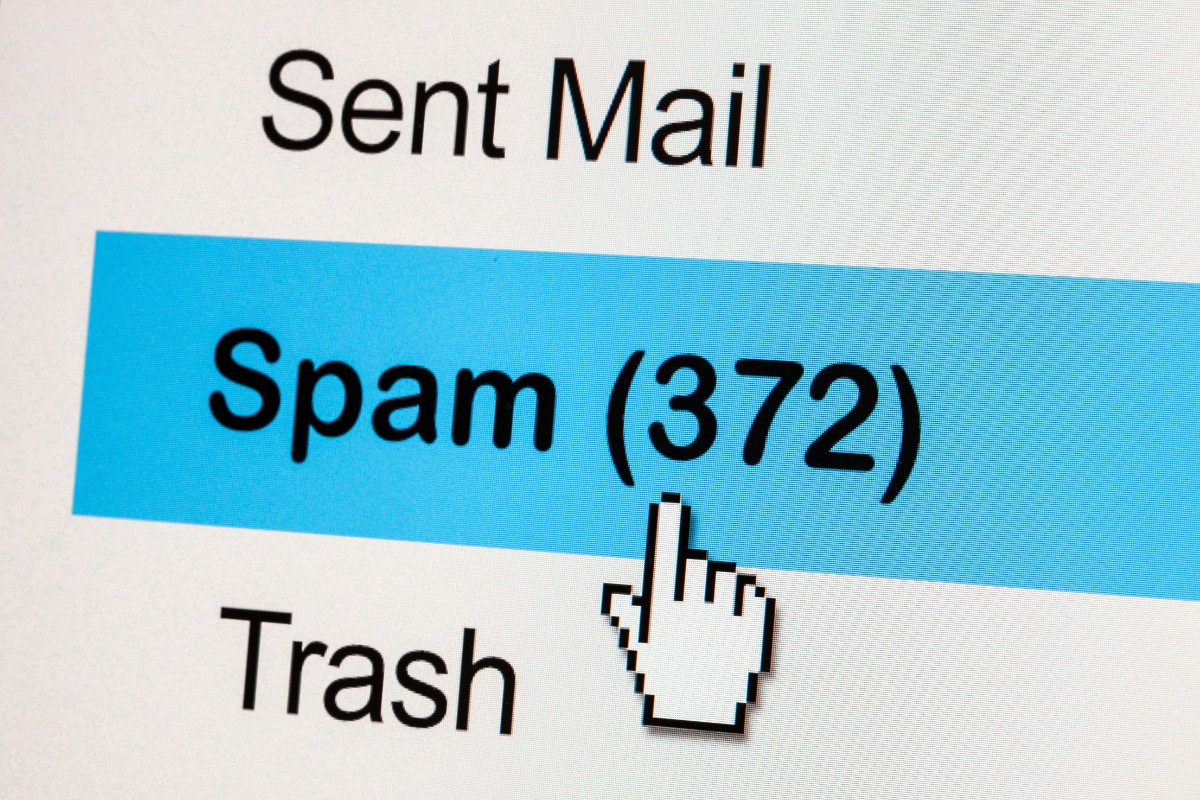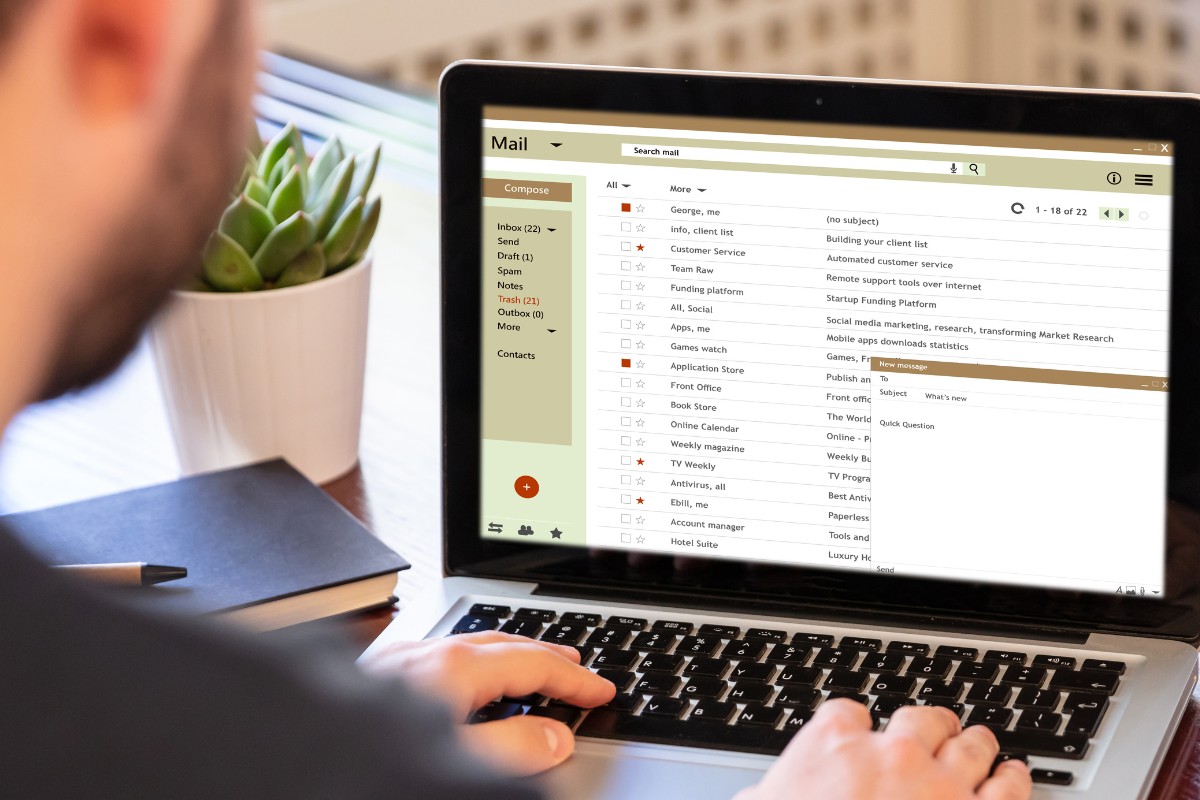The first email was sent as long ago as 1971!
It was a simple electronic mail between two computers on the ARPANET system.
Surprisingly, the concept wasn’t new.
Computers had been used to send messages for several years, but only ever to a mailbox.
Raymond Tomlinson wanted to send messages between people.
He merged existing programs to make this possible and created the first email, as well as using the ‘@’ symbol.
At the time it was simply an electronic message, and the first one didn’t involve any deep and meaningful text.
Tomlinson may have invented the email but he wasn’t the one to use the phrase email.
That came several years later.
Needless to say, it’s taken many years for emails to become part of everyday life.
However, today, there are millions of people in the world who can’t imagine life without email.
The question is, how many people use email worldwide? The answers may surprise you.
As a business owner, you’ll also find the following statistics helpful.
Email is an excellent way to contact customers and understanding who is using emails will help you launch the perfect campaign.
Post Contents
- 1 Key Statistics
- 2 How Many People Use Email Worldwide in 2024?
- 2.1 1. It’s Estimated There Are 4.37 Billion Emails Users In 2023
- 2.2 2. 347 Billion Emails Are Sent Per Day
- 2.3 3. 65% Of Email Users Utilize Apple Mail
- 2.4 4. The Average Email User Has 1.75 Email Accounts
- 2.5 5. There Are 5.59 Billion Email Accounts In Existence
- 2.6 6. 53% Of All Emails Sent Are Spam
- 2.7 7. 46% Of Emails Are Opened On Mobile Devices
- 2.8 8. 82% Of Workers Check Emails Outside Of Work
- 2.9 9. 91.5% Of Outreach Emails Go Unread
- 2.10 10. 40% Of Email Users Have Over 50 Unread Email Messages
- 3 Future Projections
- 4 Summing Up
Key Statistics
- It’s estimated there are 4.37 billion emails users in 2023
- 347 billion emails are sent per day
- 65% of email users utilize Apple Mail
- The average email user has 1.75 email accounts
- There are 5.59 billion email accounts in existence
- 53% of all emails sent are spam
- 46% of emails are opened on mobile devices
- 82% of workers check emails outside of work
- 91.5% of outreach emails go unread
- 40% of email users have over 50 unread email messages
How Many People Use Email Worldwide in 2024?
1. It’s Estimated There Are 4.37 Billion Emails Users In 2023

The number of email users has been steadily increasing for years.
On average, the number of users is increasing by 2-3% a year.
In 2017 there were 3.71 billion users.
This jumped to 3.82 billion by 2018 and, by 2020 it had surpassed 4 billion.
Email user numbers hit 4.25 billion in 2022 and there are expected to be 4.37 billion in 2023.
The trend doesn’t show any sign of stopping.
Experts predict there will be 4.73 billion email users by 2026 and there is no reason to think it will stop there.
It should be noted there are roughly 8 billion people on the planet and just over 5 billion of them are online.
(Oberlo)
2. 347 Billion Emails Are Sent Per Day
Impressively, just over 4 billion users manage to send 347 billion emails, every day!
That’s approximately 87 emails each.
Of course, many of these are sent by businesses, as newsletters and marketing campaigns.
The number of emails sent daily has also been steadily rising.
In 2017 approximately 269 billion were sent daily.
By 2020 this had moved past 300 billion, and today we’re close to 350 billion.
Unsurprisingly, as user numbers increase, so will the number of emails sent.
It’s estimated there will be 361.6 billion sent daily in 2024 and as many as 392 billion daily emails in 2026!
The increase in email users and emails sent is partly due to increased usage by individuals.
For many, it has become the preferred way to contact businesses.
Of course, business marketing campaigns are often email based, driving the numbers up further.
(Statista)
3. 65% Of Email Users Utilize Apple Mail

Every business and individual which has an email account needs to use an email provider.
This is often referred to as an email client.
While there are many options available, the majority of people choose one of the ‘big free’.
Apple tops the charts, dominating the marketplace.
According to the latest figures 65% of all email users utilize Apple Mail to send and receive emails.
Google’s Gmail takes the second spot but it’s not a close competition.
Gmail has just a 24% share of the market.
Outlook takes the third spot and fares even worse, with just 3.4% of the market.
What’s particularly interesting about this is that Apple is the most popular cell phone in the US, but Samsung is more popular across the globe.
This would suggest a bigger dependence on Gmail or hints that many emails are generated from the US.
(Oberlo)
4. The Average Email User Has 1.75 Email Accounts
How many email accounts do you have?
The latest research suggests that every email user has just under 2 email accounts.
Naturally, that’s an average, many people have just one, while some people have two, three, or more.
It should be noted that business email accounts aren’t included in the average for individuals.
Most people have a work email address but won’t necessarily access it outside of work.
Emails are used for communication, shopping, social networking, and even to subscribe to streaming services.
Unfortunately, once you’ve used your email address you’ll often end up on a list and receive a huge amount of spam.
That’s why many people have a second email address which they keep just for communicating with friends and family.
(Convince & Convert 2019)
5. There Are 5.59 Billion Email Accounts In Existence
There are 4.37 billion email users and 5.59 billion email accounts.
The reason for the difference is mainly accounts no longer in use or people having multiple accounts.
As mentioned, multiple accounts can help you separate work and friends or keep spam-filled inboxes at bay.
Of course, when you receive too much spam at one email address many people will simply switch to a new one, leaving the old one active but no longer used.
That increases the number of email accounts without increasing user numbers.
(99 Firms)
6. 53% Of All Emails Sent Are Spam

According to the latest Statista survey, just over half of all emails sent can be classified as spam.
That means unwanted and unsolicited emails which hope to part you from your money.
A spam email doesn’t always request money, it may want you to click a link and allow it to download spyware or some other malware.
Surprisingly, a spam rate of 53% is good!
In 2009 it was estimated that 94% of all emails were spam.
That’s a considerable reduction.
It’s still a significant figure.
We already know 347 billion emails are sent daily, which means approximately 183 billion spam emails are sent daily.
That’s a lot of bandwidth being taken unnecessarily.
(Statista)
7. 46% Of Emails Are Opened On Mobile Devices
The latest research by Litmus shows that nearly half of all emails are opened on a mobile device.
This is in keeping with a society that is constantly on the go.
Mobile devices, specifically smartphones, are almost always with you, easy to use, and just as powerful as many desktop computers.
Since 2016 more people are accessing the internet via a mobile device compared to desktop access.
It’s therefore not surprising that email access has followed the same route.
Currently, 46% of emails are opened from a smartphone, 35% are opened via webmail, and just 185% are opened by desktop.
This does illustrate how connected people have become and how hard it can be to switch off from work.
Interestingly, the percentage of emails opened from a mobile device can change significantly depending on the industry.
For example, emails sent by the automotive industry are opened on mobile devices 52.9% of the time.
In contrast, an email related to insurance is opened on a mobile device just 18% of the time.
(Litmus)
8. 82% Of Workers Check Emails Outside Of Work
There is little doubt the world is more connected than ever before.
It’s never been easier to chat with anyone, regardless of where they are and what time it is.
While the internet makes this level of connectivity possible, it’s smartphones which make it convenient and practical.
Unfortunately, this is making it increasingly difficult for anyone to switch off.
Alongside expectations from employers there is a fear of missing out.
This has led to people checking their emails, work and personal, at all hours of the day and night.
The study shows that 50% of employees will check their emails every three hours even if they are not at work.
The survey also showed that 82% of workers will keep an eye on their work emails even when not working.
(Statista)
9. 91.5% Of Outreach Emails Go Unread
A recent study by Backlinko highlighted the issue facing most marketers.
The simple truth is that 91.5% of outreach emails are ignored.
People simply don’t read them.
This means that 91.5% of outreach emails are a waste of time.
It’s worth noting that one of the main reasons this is the case is because the emails are generic.
If you want people to read the email make sure it has a personal message with it.
This helps it to stand out from the crowd and can persuade the receiver to look at it more closely.
If you follow up a few days later you’ll double your chances of getting a response.
It’s also a good idea to get longer subject lines.
Surprisingly, this can increase the response rate by 24.6%
Most importantly, add a personal touch to the email.
Personalizing a subject line increases the likelihood of a response by 30.5%.
Personalize the main part of the email and you’ll increase the response rate by 32.7%!
Links to social media profiles can also help as they help you appear genuine.
(backlinko.com)
10. 40% Of Email Users Have Over 50 Unread Email Messages

As the statistics show, billions of emails are sent daily and many of them are unopened, because they appear to be spam.
These facts are backed up by the latest Mailbutler survey which found 40% of respondents have at least 50 unopened email messages sitting in their inbox.
In most cases, this is because the emails can be seen to be advertising or spam.
This confirms the importance of an interesting subject line.
That’s your best opportunity to get someone looking at the email you’ve sent.
(Mailbutler)
Future Projections
The above statistics clearly show that the number of email accounts and email users will continue to grow.
Eventually everyone in the world will have internet access and emails.
Accessing emails will increasingly be undertaken via a mobile device, leaving desktop computers as largely redundant.
Many mobile devices are already as powerful as a comparable desktop, making the mobile a better option.
Of course, there will always be a need for desktops, the need will just increasingly revolve around business and scientific use.
Current projections suggest email user numbers will grow by 2.5% every year.
That means it will be many years before everyone has email access.
It’s worth noting that some people have simply been reluctant to embrace the internet, even though it has been around for a number of years.
This is reflected in the fact that the number of internet users grew by 10% in the first year of the global pandemic.
That’s the biggest increase in internet numbers since 2010.
Summing Up
The answer to how many people use email worldwide is an astonishing 4.37 billion with 5.59 billion email accounts.
What’s perhaps most interesting about this figure is that there are over 5 billion people online, suggesting that approximately one billion people are online without an email address.
The people who are online without an email address are likely to be those who don’t go online often.
There are many reasons why this is the case, such as a lack of suitable infrastructure.
A further 3 billion people have yet to use the internet and discover all the excitement and convenience it can bring into your life!
Perhaps the real question is not how many people use email worldwide, but how many people can be given access to the internet in the next year.
The greater the number the better your potential to connect with them and entice them with your marketing magic.






























